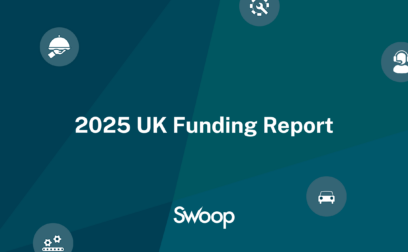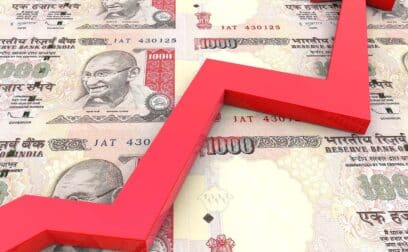TABLE OF CONTENTS
Page written by Chris Godfrey. Last reviewed on October 1, 2024. Next review due April 6, 2026.

Paying your VAT bill when it falls due is a legal obligation, but it can be a headache for many SMEs. Cashflow shock is a common side effect of each quarterly payment. However, it doesn’t have to be like that. Many savvy business owners take the sting out of paying VAT by taking out a VAT Loan. These quick and simple loans pay the taxman and ease the burden by allowing you to repay in instalments to suit your business situation. Say goodbye to penalties and surcharges. Say hello to financial security.
VAT is a Value-Added Tax, like a sales tax. It is levied on the price of a product or service at each stage of production, distribution, or sale to the end consumer. For example, a product may go from raw materials, to processed bulk item, to individual finished product, and with different producers along the way. Each stage of that journey will see VAT levied on the product. If the ultimate consumer is a business that collects and pays to the government VAT on its products or services, it can reclaim the tax paid. If the ultimate consumer is not a business or is not registered for VAT, they may not reclaim the tax paid.
Many products and services in the UK are liable for VAT – that is, they are not VAT exempt. Goods and services that are not exempt typically accrue VAT at the following rates:
Standard rate: 20% (most goods and services).
Reduced rate: 5% (some goods and services, such as home energy and children’s car seats).
Exempt rate: 0% (includes basic and essential items such as most food and children’s clothes).
VAT registered businesses collect VAT on behalf of HMRC and must pay the collected tax (minus any reclaimed tax), to the government on a regular basis – usually quarterly. Most VAT must be paid one month and seven days after the reporting period – for example, tax collected in March would be due for payment on 7th May. Some types of business will have different payment requirements – for example, one month and 22 days after the reporting period.
VAT registered businesses receive a unique VAT number. This must be shown on invoices and most receipts.

A word from Andrea
"VAT is a Value-Added Tax, like a sales tax, levied on the price of a product or service at each stage of production, distribution, or sale to the end consumer. Many savvy business owners take the sting out of paying VAT by taking out a VAT Loan. Quick and simple loans pay the taxman and ease the burden by allowing you to repay in instalments to suit your business situation."
You must register for VAT if:
Taxable turnover is your sales of goods and services that would be liable to VAT, (non-exempt).
The amount of VAT a business pays or claims back from HMRC is usually the difference between the VAT charged by the business to customers and the VAT the business pays on their own purchases. However, HMRC allows businesses to opt for different methods of collection and payment:
Standard method: All VAT liable sales invoices and purchases are used to calculate the VAT payable, regardless of if the business has received payment of their invoices or if they have paid their bills during the accounting period. This may cause cashflow issues for some businesses.
Cash accounting method: Only income from tax liable invoices and costs from VAT liable purchases that have been paid are used to calculate VAT payable. This method can reduce cashflow issues, but it may not be suitable for businesses that regularly reclaim more VAT than they pay.
Flat rate method: For businesses with turnover of less than £150,000, excluding VAT. Businesses pay a flat rate of VAT to HMRC. They keep the difference between what they charge their customers and pay to HMRC. They cannot reclaim the VAT on their purchases – except for certain capital assets over £2,000. Different types of business will have a different flat rate – for example, builders have a rate of 9.5%, and hairdressers have a rate of 13%. The flat rate scheme is designed to reduce the admin and accounting burden on small businesses, as it simplifies the calculation of VAT payable.
Paying your VAT by the deadline is important to avoid hefty penalties and surcharges. Businesses facing late payment can avoid these extra costs by taking out VAT loan.
A VAT loan is used to pay the quarterly VAT payment to HMRC. Businesses typically use a VAT loan to avoid penalties during periods of slow cashflow, (such as seasonal demand), or if they wish to hold on to their available cash for longer, (such as to invest in the business with a major purchase).
A business applies to a lender for a VAT loan. If successful, the lender pays the borrowed sum directly to HMRC to pay the outstanding VAT. The business pays the lender back in monthly instalments, which are tailored to suit the business and can be spread across a period of 3, 6, 9 or 12 months.
As with any secured business loan, the assets provided in an asset-financing agreement are either loans and are available from as low as £5,000, up to a maximum of £5 million. The sum you can borrow will depend on the unique circumstances of your business and your eligibility. Swoop makes every effort to ensure applicants receive the funds they need. Even if you’ve been rejected elsewhere, we may still have a VAT loan to suit your situation. Register to speak to an expert.
VAT calculator can be used to determine the Value Added Tax (VAT) on a given amount. Helping individuals and businesses calculate the amount of VAT that should be added to or subtracted from a price.
This calculator is intended for illustration purposes only and exact payment terms should be agreed with a lender before taking out a loan.
The borrower’s financial situation will typically determine how much borrowing they may secure. VAT is paid quarterly and loans are usually granted one quarter at a time. However, where a borrower in good standing has an open loan, but they find they need to borrow funds for an additional VAT quarter, it may be possible for additional lending to be secured.
Interest rates for VAT loans are typically higher than other forms of business loans and they can vary depending on the borrower’s criteria and general market rates. Typical interest rates for borrowers with good eligibility across the 3 month loan duration is currently as low as 2.9%.
A VAT bridging loan is used to pay VAT that may be due on the purchase of a commercial property. The rules on VAT liability on business real estate are complicated and it is not unusual for the need to pay this tax to become known only during the later stages of the transaction. Due to the large sums involved, this unforeseen burden may cause significant extra costs to be incurred, or even cause the sale to abort. A VAT bridging loan can negate this thorny problem and ensure the transaction completes.
As well as standard credit checks and a review of the business’s financial situation, other eligibility criteria will usually apply. They include:
Many types of business are eligible for a VAT loan – manufacturing, consulting, professional services, agricultural, construction, etc. Register to confidentially discuss your borrowing needs and the eligibility of your business.

Pros
VAT loans are always paid directly to HMRC. This ensures that you meet the legal requirements of being VAT registered and that you avoid late payment penalties. A VAT loan can also smooth out your cashflow. Instead of paying one large quarterly bill, the payment can be spread across monthly instalments for up to one year – (although there will be interest to pay on the loan). Funds freed up by using a VAT loan can be invested into other areas of your business. Additionally VAT loans do not use existing banking or credit facilities and they may be arranged as ‘rolling’ or drawdown borrowing, (subject to eligibility). This arrangement allows the borrower to use loan funds on a fluctuating basis, much like an overdraft.

Cons
Because they are short-term, VAT loans can be more expensive than other forms of business borrowing. Depending on how quickly they need the funds, business owners should consider the cost of this type of finance compared to other lending options.
No. VAT loans are specifically designed to pay outstanding VAT. However, there are other loan products available for the payment of different corporation taxes. Register with Swoop to discover your options in minutes.
Don’t get caught with hefty penalties and surcharges by paying your VAT bill late. Contact Swoop to secure the VAT loan you need. Pay your tax on time, ease your cashflow, use your extra money to grow your business. Apply now.
Chris is a freelance copywriter and content creator. He has been active in the marketing, advertising, and publishing industries for more than twenty-five years. Writing for Barclays Bank, Metro Bank, Wells Fargo, ABN Amro, Quidco, Legal and General, Inshur Zego, AIG, Met Life, State Farm, Direct Line, insurers and pension funds, his words have appeared online and in print to inform, entertain and explain the complex world of consumer and business finance and insurance.
Swoop promise
At Swoop we want to make it easy for SMEs to understand the sometimes overwhelming world of business finance and insurance. Our goal is simple – to distill complex topics, unravel jargon, offer transparent and impartial information, and empower businesses to make smart financial decisions with confidence.
Find out more about Swoop’s editorial principles by reading our editorial policy.
Related pages
Get your free VAT loans quote today
Join the 95,000+ businesses just like yours getting the Swoop newsletter.
Free. No spam. Opt out whenever you like.



























We work with world class partners to help us support businesses with finance
Kingfisher Way, Silverlink Business Park, Newcastle upon Tyne, NE28 9NX, UK
View in Google Maps35 Bull Street, Lewis Building, Birmingham B4 6AF, UK
View in Google MapsAberystwyth Innovation and Enterprise Campus
Gogerddan Campus
Aberystwyth University
Ceredigion
SY23 3EE
Dogpatch Labs, The CHQ Building, Custom House Quay, Dublin, Ireland
View in Google MapsSuite 801, Level 8, 84 Pitt Street, Sydney, NSW 2000, Australia
View in Google Maps43 W 23rd St, New York, NY 10010, United States
View in Google Maps21 Dreyer Street, Cape Town, South Africa, 7708
View in Google MapsClever finance tips and the latest news
Delivered to your inbox monthly
Join the 95,000+ businesses just like yours getting the Swoop newsletter. Free. No spam. Opt out whenever you like.
Thanks for requesting a call back
a member of the team will be in touch.




